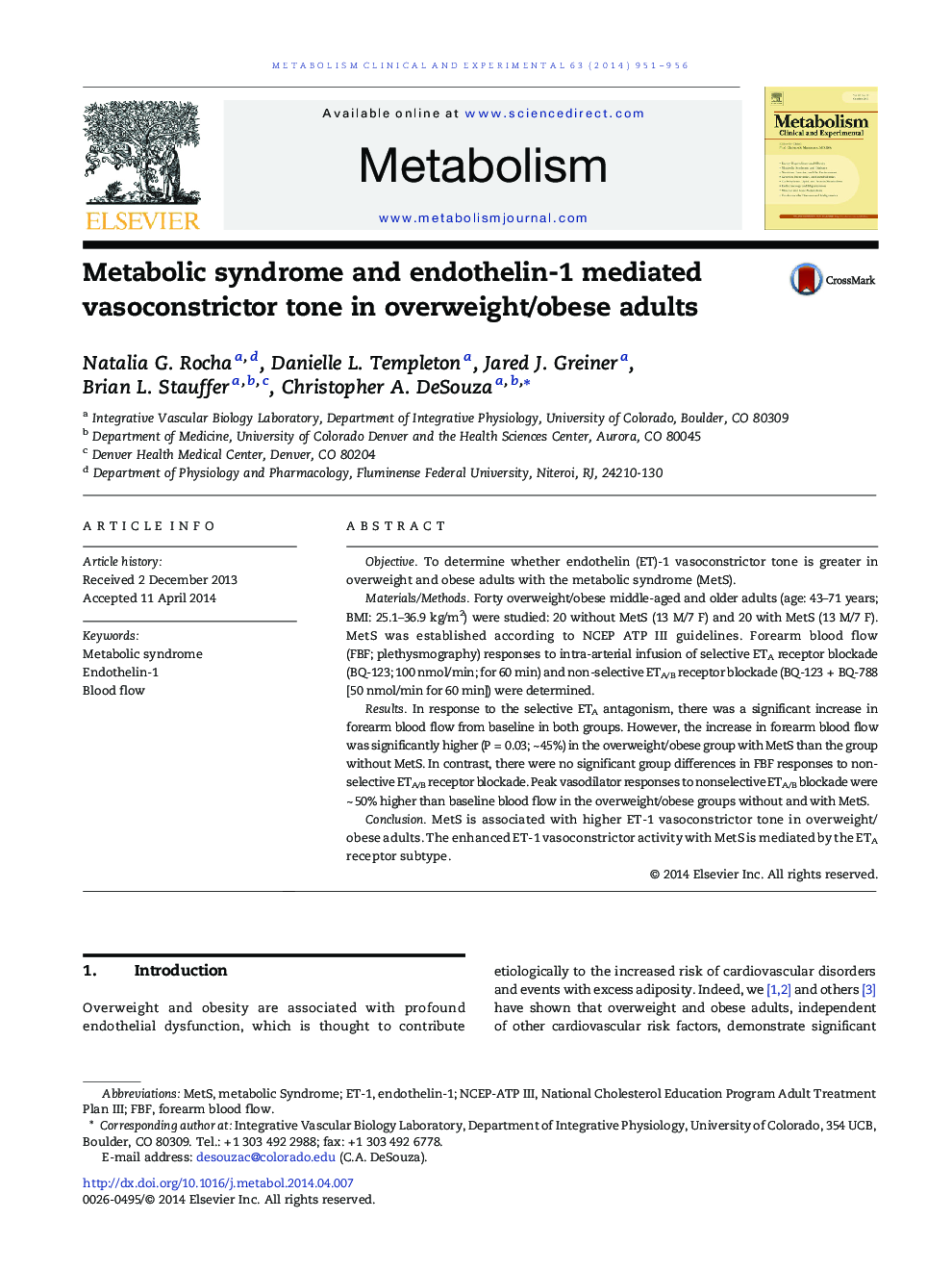| Article ID | Journal | Published Year | Pages | File Type |
|---|---|---|---|---|
| 2805509 | Metabolism | 2014 | 6 Pages |
ObjectiveTo determine whether endothelin (ET)-1 vasoconstrictor tone is greater in overweight and obese adults with the metabolic syndrome (MetS).Materials/MethodsForty overweight/obese middle-aged and older adults (age: 43–71 years; BMI: 25.1–36.9 kg/m2) were studied: 20 without MetS (13 M/7 F) and 20 with MetS (13 M/7 F). MetS was established according to NCEP ATP III guidelines. Forearm blood flow (FBF; plethysmography) responses to intra-arterial infusion of selective ETA receptor blockade (BQ-123; 100 nmol/min; for 60 min) and non-selective ETA/B receptor blockade (BQ-123 + BQ-788 [50 nmol/min for 60 min]) were determined.ResultsIn response to the selective ETA antagonism, there was a significant increase in forearm blood flow from baseline in both groups. However, the increase in forearm blood flow was significantly higher (P = 0.03; ~ 45%) in the overweight/obese group with MetS than the group without MetS. In contrast, there were no significant group differences in FBF responses to non-selective ETA/B receptor blockade. Peak vasodilator responses to nonselective ETA/B blockade were ~ 50% higher than baseline blood flow in the overweight/obese groups without and with MetS.ConclusionMetS is associated with higher ET-1 vasoconstrictor tone in overweight/obese adults. The enhanced ET-1 vasoconstrictor activity with MetS is mediated by the ETA receptor subtype.
